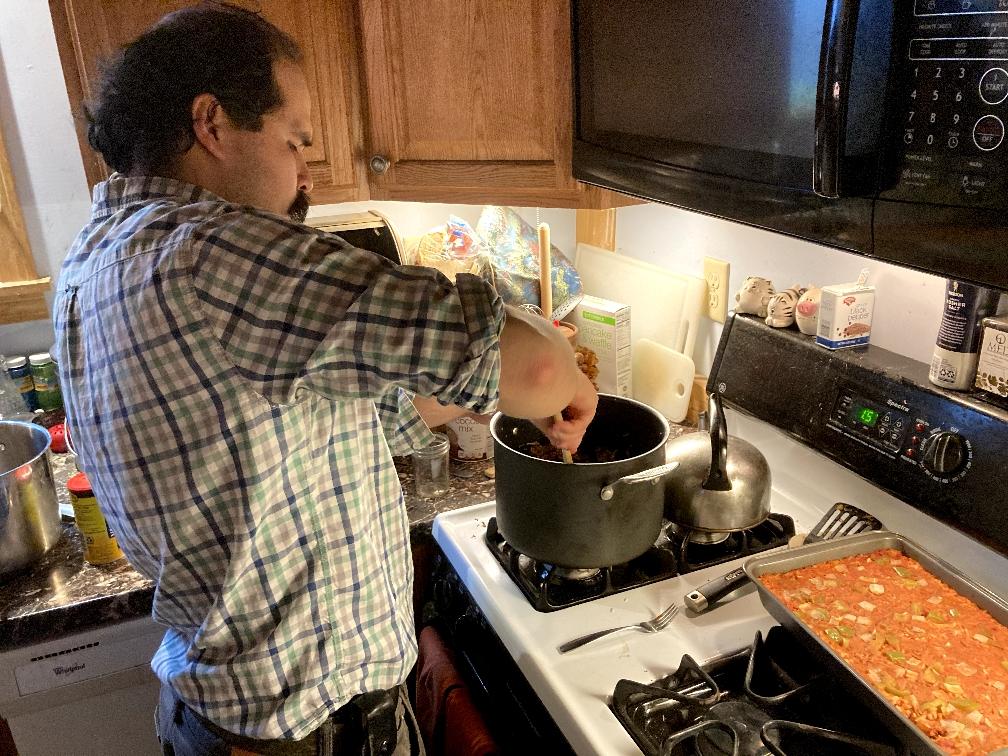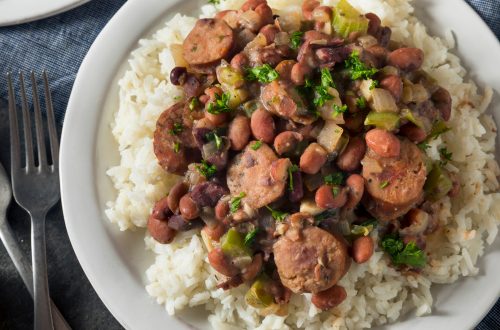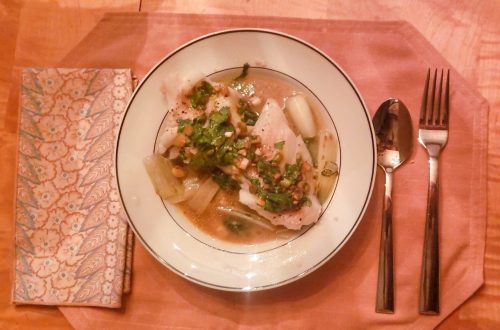
A Family Tradition: Real Sonoran Chili
Here’s a story in honor of our mothers and grandmothers who taught us how to cook.
It all started with tacos. When they were young, my children Jamie and Ben preferred tacos above most other foods, especially Ben. But they didn’t usually make the tacos themselves. That began to change for Jamie when she was a student at the University of Arizona in Tucson. That’s where she met her future husband Patrick O’Hagin (pictured). On weekends, they would often visit Patrick’s grandmother, who would prepare food for them – usually something she called poor man’s tacos. It meant chopping a baked potato and frying the little cubes with a mix of meat with some spices, then placing the mix in a tortilla that had been heated in a toaster. No hard-shell tacos in the O’Hagin household. Jamie and Patrick, who now live near Lake Winnipesaukee, New Hampshire, still look forward to visiting his family in Tucson, usually at Thanksgiving.
Don’t let the sound of the O’Hagin name fool you. Patrick’s grandparents were originally from Sonora in Mexico. And for many years, it was Patrick’s grandmother who took the lead in planning and preparing meals, especially during the holidays. It was then that Jamie learned more about how to make some very tasty Mexican dishes. The central focus at most of those meals was a chili, but not the ground beef and beans kind familiar to most of us. This was a chunky beef dish that required teamwork and about three days of preparation. Since Patrick’s grandmother no longer supervises these meals, the job has fallen to Patrick’s brother, a professional chef.
Cooking chili as a team
The chili starts with a large well-larded beef roast, usually chuck. Each four-pound portion would require the addition of a bulb of garlic. Once the beef has been seared in a hot skillet, the team then peels the garlic cloves, pokes holes in the beef roast, and shoves a clove of garlic in each hole. Meanwhile other members of the team have prepared three or four green peppers and a similar number of onions, then quartered them. Then everything – beef surrounded by the peppers and onions – is placed in a roasting pan, covered with foil, and roasted in a slow oven – about 250 degrees for a whole day until the meat is shreddable.
When finished, the meat is removed, cooled, then shredded and salted. The vegetables and accumulated juices are placed in a blender or food processor and puréed until the sauce is smooth. Meanwhile, Patrick’s mother has made the beans for the dish while Patrick’s father makes his Spanish rice, a recipe from HIS grandmother that requires roasting the rice, frying it in a pan, and then adding tomato sauce, chopped peppers, and onions. Just before serving, the sauce is heated in a saucepan, then a chili powder is added. When it’s time to eat, plates are filled with separate portions of the meat, the beans, the rice, the sauce, and tortillas. Leftover meat is saved for making into tamales in January.
As for daily meals, Jamie and Patrick reported that they often have the more American version of chili con carne as well as tacos once a week. Their kids, six-year-old Gus and four-year-old Eliza, like sopapillas, a fried quick bread usually covered in butter and sugar or honey. Gus also loves conchas, a Mexican pan dulce. And as for Jamie, she can’t wait to return to Tucson for raspado, a shaved ice dessert covered with chopped fruit in juices, served with sweet condensed milk and covered with a scoop of vanilla ice cream. “It’s the thing to get in a hot desert.”
Happy Mothers’ Day.
To comment, please click on “Read in Browser” or on the headline to view the blog on the website. You can log in and comment at the end of the blog to share your thoughts and start a discussion.
If you’d like to share the blog, click on the Facebook icon or one of the others. Thanks!





One Comment
Susan R
OMG this sounds delicious! The sauce of the pureed vegetable – sounds so obvious once I read that – of course! And the shredded beef – yum! We love tacos here, with the soft corn tortillas. This opens a whole new chapter (I have been making mostly fish tacos – I know, very American, New England.)